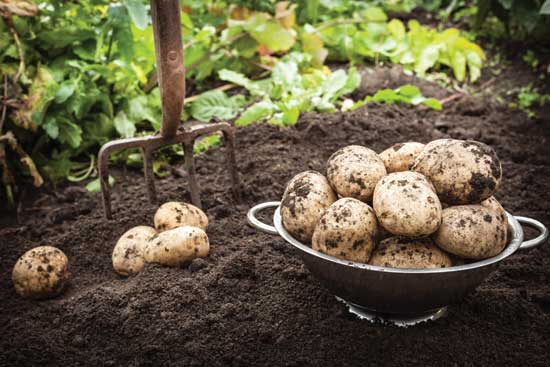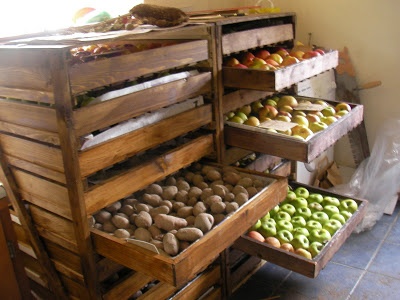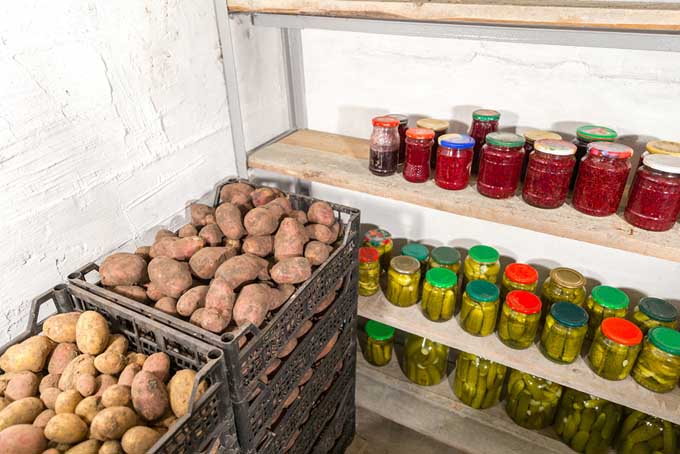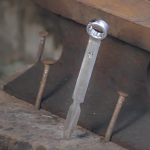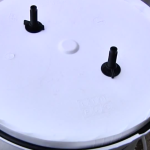The Importance of Curing Potatoes for Wintertime Storage
Potatoes are resilient by nature, and they can keep for months as long as they are stored under the right conditions. However, it’s necessary to cure them beforehand in order to make sure that they are in optimal condition to hold up during the long winter ahead. The good news is that the process is very simple, and curing can also give you the opportunity to address other issues that can impact the quality of your stockpile at the same time.
Curing Made Simple
Curing essentially involves laying the potatoes out on a single row atop a flat surface so that excess moisture can evaporate prior to storage. However, there are a couple of important things to consider as you cure your crop: They should be laid out in a cool, dark location that has good ventilation.
Potatoes tend to cure best at temperatures at or below 65 degrees in a room that has no light. However, they can cure in warmer temperatures as long as humidity levels are low, but the process may take a few days longer. If there isn’t sufficient airflow in the room, consider using a fan or two to keep the keep air circulating to speed up the process.
Average curing times are about 10-12 days depending on the moisture content in the potatoes and the temperature and air quality in the room. You don’t have to do much other than to roll them over at the halfway point in order to ensure the entire potato is exposed to the ambient air. You can also cover the potatoes with a breathable fabric in order to block out any light. Light turns the potatoes green, and this can leave your crop tasting bitter and unpleasant, and green potatoes are also mildly-poisonous as well.
Benefits of Curing
The first benefit is that curing hardens the skins around the potatoes. This protects them in storage and reduces the chances of them developing soft or black spots. Hardened skin also dramatically extends the shelf life of stored potatoes. Another important benefit associated with curing is that it allows potatoes to heal themselves from damage caused by minor scratches, nicks and bruises. This can go a long way with preventing these blemishes from turning into mold or rot while in storage.
Curing also gives you the opportunity to sort and inspect each one prior to storing them. You can separate them by size, toss away any defects and ensure that each potato is suitable for long-term storage. Remember that one defective potato can end up contaminating an entire batch, so it’s important to weed those out beforehand.
Storing the Potatoes
Once the potatoes have been cured, give them a final glance to identify and remove any defects. Gently dry-rub off excess dirt and debris from each potato, but handle them carefully in order to avoid damaging the skins. Finally, store the potatoes in boxes, bushels or bags that are porous and allow for good ventilation. You also want to keep them in a cool and completely-dark location that is also well-ventilated.
Following these simple steps can help you to get a shelf life in excess of six months in some cases. You will also significantly-reduce the chances of spoilage throughout the winter as well. When you go to retrieve the potatoes, identify ones that less-than-perfect and choose those while leaving the healthiest in storage for later. This will help to reduce waste and ensure that your stockpile will remain fresh for as long as possible.
Take a closer look at curing, as well as how to create the optimal storage conditions, and chances are that you’ll be able to enjoy the fruits of your labor well into the next growing season.


